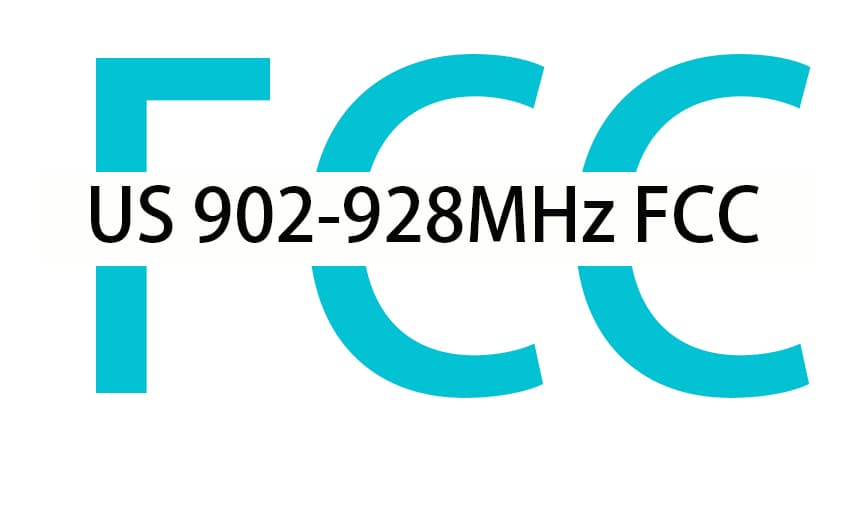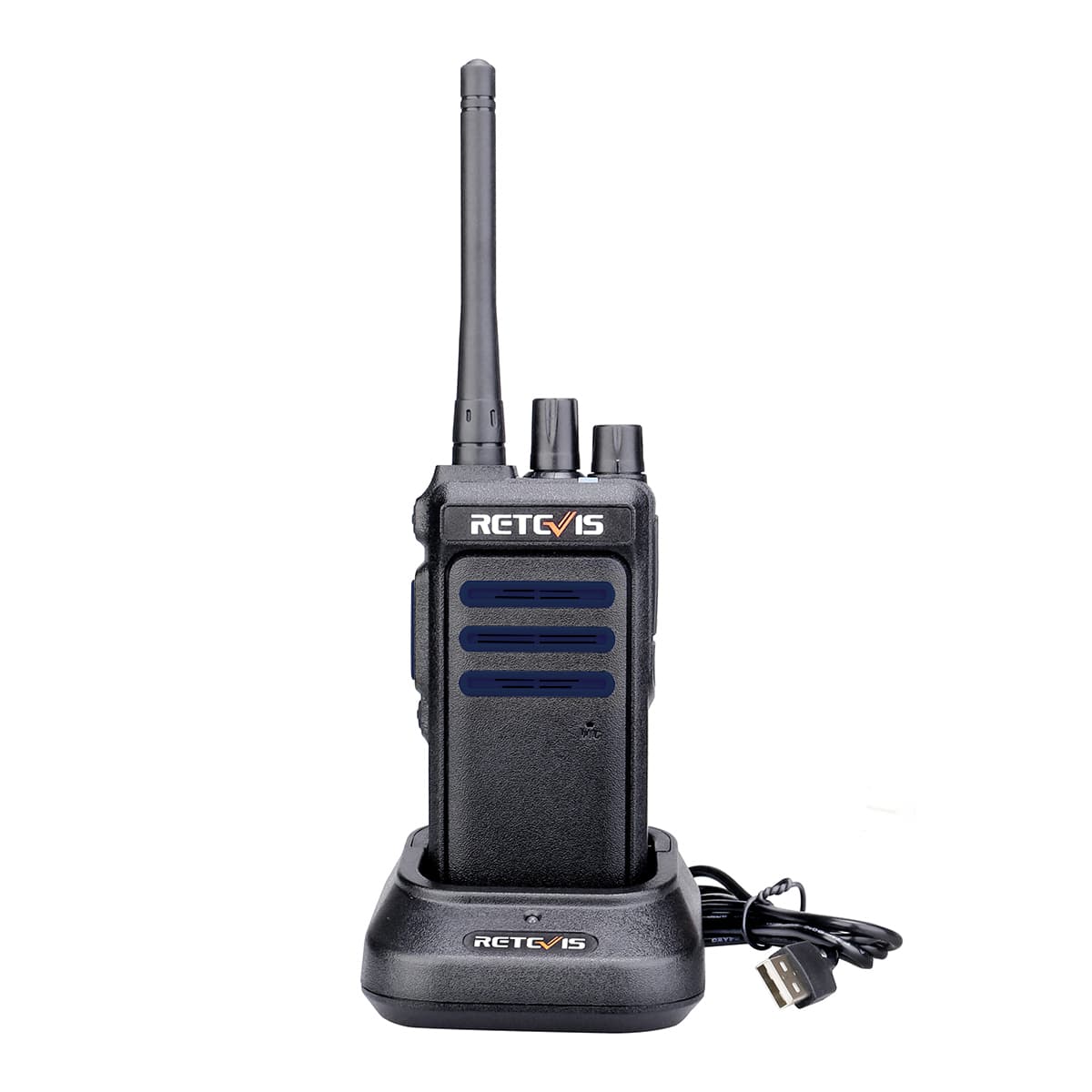US 902-928MHz frequency band description
- Retevis Solutions
- 902-928MHz, license free dmr walkie talkie, Retevis RT10, License free dmr digital two way radio

902-928MHz Regulation description:
Devices operating in the 902MHz to 928MHz frequency band must comply with Part 15.249, and the allowable field strength is up to 50mV/m (distance 3 meters). Harmonic is limited to 500µV/m, while other clutter signals are limited to 50dBc, there is no limit to the content and duration of the emission.
(A) Limited to radiators using frequency hopping and digital modulation, these radiators follow:
(1) The carrier frequency of the frequency hopping channel is divided by the minimum frequency hopping channel bandwidth of 25 kHz or 20 dB, whichever is greater. Or, the frequency hopping carrier frequency of the 2400-2483.5 MHz frequency hopping system is divided by 25 kHz or two-thirds of the 20 dB bandwidth of the frequency hopping channel, whichever is the greater, if the output power of the system does not exceed 125 mW .
(2) For frequency hopping systems operating in the 902-908 MHz band, if the 20dB bandwidth of the frequency hopping is less than 250 kHz, the system should use at least 50 hopping frequencies, and the average occupancy time of each frequency is not more than 20 seconds. 0.4 seconds, if the 20 dB bandwidth of the frequency hopping is equal to or greater than 250 kHz, the system should use at least 25 hopping frequencies, and the average occupation time of each frequency is not more than 0.4 seconds within a 10-second period, and the maximum allowed frequency hopping is 20 dB The bandwidth is 500kHz.
(2) For systems using digital modulation technology, the minimum 6dB bandwidth should be at least 500kHz.
(B) The maximum peak conduction output power does not exceed the following regulations:
(1) Frequency hopping system in the 902-928MHz segment: 1W for at least 50 frequency hopping channels; 0.25W for at least 25 frequency hopping channels, but less than 50 frequency hopping channels.
(3) For the digital mode system: 1W.
(4) The directional gain of the antenna does not exceed 6dBi.
(C) Operation with directional antenna gain greater than 6dBi:
(E) For a digital modulation system, at any time interval of continuous emission, the power spectral density conducted from the radiator to the antenna is not greater than 8dBm in any 3kHz band.
(F) For a hybrid system of frequency hopping and digital modulation technology. When the frequency hopping operation, direct sequencing or digital modulation operation is turned off, the average occupancy time on any frequency does not exceed 0.4 seconds within the time interval of the frequency hopping number multiplied by 0.4. Due to the digital modulation operation of the power spectral density conducted from the radiator to the antenna, when the frequency hopping is turned off, it is not more than 8dBm in any 3kHz band, and the 3kHz band is during continuous transmission at any time interval.
(G) The frequency hopping spread spectrum system does not need to use all available frequency hopping channels each time it transmits. However, if the transmitter has a continuous data (or information) stream, the system including the transmitter and receiver needs to comply with all the provisions of this section. Moreover, a system that uses short-time transmission bursts must follow the definition of a frequency hopping system, and must also transmit on the minimum number of frequency hopping channels.
(H) The system integration intelligence of frequency hopping and expanding the spectrum allows the system to identify other users in the expanded spectrum, so that the system can independently choose to use frequency hopping combinations to avoid frequency hopping on the licensed channels that have been occupied. In other ways, in order to avoid occupying a single frequency hopping at the same time, it is not allowed to coordinate the frequency hopping system through multiple transmitters.
(I) The system should ensure that the public is not exposed to radio frequency energy levels that do not exceed the FCC regulations (reference: §1.1307(b)(1) of this chapter)
According to regulations, mainly SAR (specific absorption rate)
General Uncontrolled/Exposure general radiation exposure/uncontrolled radiation exposure limit
(100 kHz-6 GHz)
whole-body 0.08 W/kg
peak spatial-average 1.6 W/kg
partial-body 4 W/kg
The field strength is limited as follows (reference: Part 15.249):
See the table below for field strength
Fundamental Frequency Fundamental Frequency Field Strength (millivolts/meter) Harmonic Field Strength (microvolts/meter)
902-928 MHz 50 500
2400-2483.5 MHz 50 500
5725-5875 MHz 50 500
Except for harmonics, radiated emissions outside the specified frequency bands should be reduced to 50 dB below the reduced value of basic radiated emissions or general radiated emission limits in § 15.209.
The above field strength limits are based on average limits. The peak field strength of any emission does not exceed the permitted maximum average limit of 20 dB.
902-928MHz FCC certification standard:
In the United States, the Federal Communications Commission (FCC certification) is responsible for regulating all RF equipment. These regulations are contained in Chapter 47 of the Code of Federal Regulations (CFR). Title 47 consists of many volumes; however, all rules applicable to operation in the 902-928 MHz band All are included in volumes 0-19.
Part 15 has very simple regulations for the 902-928 MHz frequency band. There are no restrictions on the application, content or duration of transmission, and it is limited to factors such as power output, bandwidth, harmonics and spurious emissions.
Benefits of working in the 902-928 MHz frequency band:
First, it is not subject to the strict restrictions and application restrictions imposed by the FCC certification on some other frequency bands. In this frequency band, almost any analog or digital signal can be sent without being restricted by content or duration.
Second, the higher legal output power allows longer transmission distances.
Third, frequency propagation in the 900 MHz range is better than higher frequencies such as 2.4 GHz. Therefore, lower output power is required to obtain any specific distance, thereby reducing transmitter power consumption.
Fourth, antenna size and compactness. A useful by-product of higher frequencies is shorter wavelengths. This allows the length of a quarter-wave antenna in the 900MHz range to be generally less than 3.25 inches (8.255 cm).

Retevis RT10 902-928MHz DMR Digital License-free Handheld Two Way Radio designed for business operations, the Retevis RT10 radio will free your time from regulatory paperwork and licensing applications and saving radio licensing fees.
License-free frequency band: Licensed by the Federal Communications Commission (FCC) and the Canadian Department of Industry, it can operate freely in the 900mhz ISM (industrial, scientific and medical) frequency band.
The main feature of Retevis RT10, 900MHz License Free, using frequency hopping spread spectrum (FHSS) technology, compared with standard analog radio, can achieve more reliable and more private communication, ultra-thin body, with display and half keyboard settings, card sleeve Type rotating back clip design, etc., suitable for retail industry, restaurants and other scenes.






